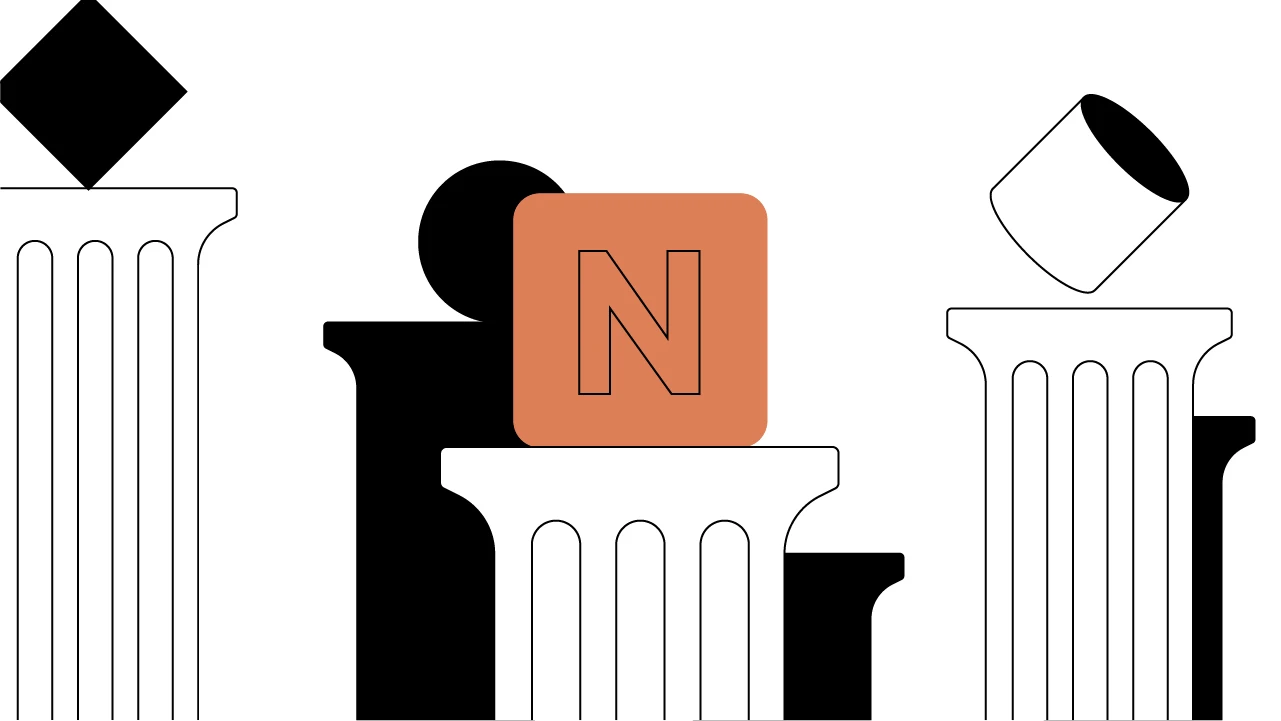Contents
Immutable X (IMX): Layer-2 Scaling for NFTs
Increasing the affordability, speed, and security of transactions, Immutable X is scaling the Ethereum NFT economy with zk-Rollup technology.
Updated October 16, 2023 • 5 min read

Summary
Immutable X is the first Layer-2 solution targeted entirely toward scaling Ethereum-based non-fungible tokens (NFTs). As NFTs grow in the decentralized gaming and metaverse space, the need for a scalable, fast, and cheap NFT marketplaces cannot be overstated. For game developers looking to mint millions of NFTs as in-game assets, Immutable X might present a viable solution: zero gas fees, instant transactions, and all the security of the underlying Ethereum network thanks to zk-Rollup technology.
What Is Immutable X? NFTs and Scaling Ethereum
Launched in 2021, Immutable X is a Layer-2 solution for scaling Ethereum. It is primarily focused on improving the usability of non-fungible tokens (NFTs) on the platform. Ethereum is the world’s most popular smart contract blockchain and is home to most of the world’s decentralized applications (dApps), NFTs, and other cutting-edge Web3 technologies. However, its success has come in tandem with network congestion and cost-prohibitive fees inhibiting its widespread, mainstream adoption.
Like many Layer-2 projects on Ethereum, Immutable X was built to address the high costs and slow speed of its underlying network. Layer-2 technologies like Immutable X achieve this by abstracting transactions and data processing away from the main Ethereum blockchain in order to ease transaction bottlenecking on the network. In contrast to many other Layer-2 solutions, Immutable X has narrowed its purview to deal exclusively with NFTs on the Ethereum network.
Thanks to their tokenized uniqueness, NFTs are quickly finding all kinds of use cases in everything from decentralized gaming to collectibles, art, and the metaverse. However, this uniqueness often comes with a data burden that makes Ethereum NFTs expensive to trade and illiquid. The Immutable X NFT protocol provides a fast, scalable, and trustless method of minting, trading, and transacting NFTs to help accommodate increasing demand in the rapidly growing Ethereum NFT sector.
Immutable X and Zero-Knowledge Rollups (zk-Rollups)
Immutable X relies on Zero-Knowledge Rollups (zk-Rollups) to achieve its goal of scalability. Rollups work by batching together groups of transactions, generating a “proof” for the entire batch, and returning that proof to the Ethereum network for verification as a single transaction. Instead of thousands of potentially costly and slow individual transactions working through congestion on the Ethereum network, only one transaction is required — a major scalability boon for the network.
There are two main types of Rollups: Optimistic Rollups (ORs) and zk-Rollups. ORs are characterized by “fault proofs” that assume a batch’s proof is valid unless proven otherwise over a two-week verification period, at which point the data therein becomes immutable on the Ethereum chain. Immutable X’s option of zk-Rollups instead uses “validity proofs” that rely on zk-SNARKS or zk-STARKS — which are specialized types of cryptographic proofs — and complex mathematics to determine the validity of transactions contained in the zk-Rollup. While much more computationally complex than Optimistic Rollups, zk-Rollups have the benefit of being instantaneous. Once a zk-Rollup is accepted on-chain, it is immediately immutable.
These zk-Rollups enable the scaling needs required by Immutable X while preserving the security and trustlessness of the underlying Ethereum network. Minting and trading Ethereum NFTs on Immutable X takes place at a fraction of the cost — and time — of the Layer-1 Ethereum network. Further, the gas fees incurred for processing batches of transactions to Ethereum via zk-Rollups are comparatively negligible, and are paid by Immutable X to provide a gas-free experience for end users.
ERC-721 Metadata: NFT Innovation
In particular, Immutable X is also notable for innovatively structuring ERC-721 metadata. Specifically, the project enables metadata orders on its NFT marketplace. That means that users can place a bid for any CryptoPunk, for example, instead of just one particular CryptoPunk. Traditionally, placing a category-wide bid would require users to bid individually on every asset that meets their criteria — quite a laborious process.
Metadata orders are especially useful for games like Gods Unchained, which may eventually have billions of in-game assets represented by NFTs. Maybe a user wants the cheapest version of a particular trading card, or maybe they’re looking for a specific version that was issued in a particular season, or perhaps they want one that was once owned by the creator of Gods Unchained himself. The difficulty of finding a particular asset like one of these has hindered overall liquidity in the NFT economy.
Rather than spending countless hours searching through marketplaces, attempting to filter results, and placing individual bids, an Immutable X user can instead take advantage of a metadata order. These orders allow users to buy or sell assets based on their NFT metadata rather than entire assets themselves. So a user could search for a trading card based on its price falling below a certain threshold or based on its release date, for example.
Immutable X and IMX Tokenomics
The primary source of revenue for the Immutable X crypto protocol is through fees. Users are not charged any gas fees for using the platform, but pay fees for exchanging assets. Immutable X charges a 2% fee on primary asset sales and a 2% fee on NFT exchanges. Additionally, individual marketplaces on the Immutable X NFT platform can impose their own fees at their discretion.
Immutable X relies on its native utility and governance token IMX to accelerate the growth of the platform. Users are required to pay 20% of every platform transaction fee in IMX (and if users don’t have IMX, it will automatically be purchased on the open market with users’ ether (ETH) or whichever asset they’ve used for payment). Further, the IMX used to pay transaction fees is set aside in a pool to proportionally reward users who stake their IMX with the protocol. Lastly, users can vote on Immutable X governance proposals with voting power proportional to the number of IMX tokens they own.
IMX is an ERC-20 token with a total supply of two billion IMX. The IMX token supply has been allocated as follows:
~51% to ecosystem development grants
25% to project development
~19% to public and private token sales
4% to the foundation reserve
Users also have the opportunity to earn IMX tokens by completing actions that are beneficial to the Immutable X protocol. In a gamified experience, users can earn points for actions like trading NFTs on the platform. Then, the daily rewards pool distributes IMX to platform users proportionally according to their respective points. Lastly, Immutable X has also offered promotional play-to-earn (P2E) distributions for the IMX token. For example, users who connected their wallets to the Gods Unchained game, played at least one multiplayer game, and held a Gods Unchained NFT in their Immutable X wallet were eligible to receive IMX tokens via a promotional airdrop.
Immutable X and the Ethereum NFT Ecosystem’s Future
In addition to improving the speed and cost efficiency of the Ethereum NFT ecosystem, Immutable X has also set out to make the NFT market more environmentally friendly. Immutable X is committed to offsetting the carbon footprint of its business. That means all NFTs traded on the platform are carbon neutral — addressing a popular criticism (and roadblock to adoption) that the crypto and Web3 industries are environmentally unfriendly due to the energy requirements of bitcoin (BTC) mining.
Immutable X is moving Web3 stridently forward by using new Layer-2 solutions like zk-Rollups and zk-STARKs and applying them over a network finely tuned to the needs of NFTs. This results in dramatically improved speed, cost, and options for minting and exchanging Ethereum NFTs. Further innovations like ERC-721 metadata utilization provide powerful new features and maturity to the wider NFT market.
Cryptopedia does not guarantee the reliability of the Site content and shall not be held liable for any errors, omissions, or inaccuracies. The opinions and views expressed in any Cryptopedia article are solely those of the author(s) and do not reflect the opinions of Gemini or its management. The information provided on the Site is for informational purposes only, and it does not constitute an endorsement of any of the products and services discussed or investment, financial, or trading advice. A qualified professional should be consulted prior to making financial decisions. Please visit our Cryptopedia Site Policy to learn more.

Is this article helpful?


